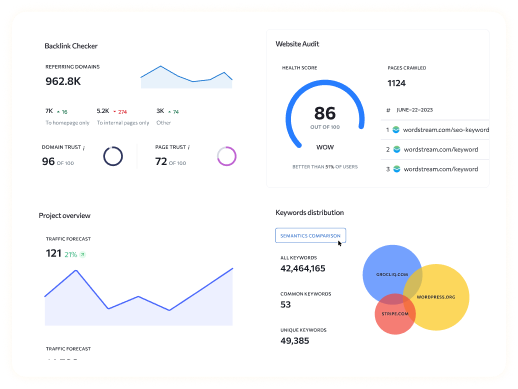Integrating eBay with your Shopify store is a strategic move for eCommerce and direct-to-consumer (D2C) brands looking to expand their market reach and streamline their sales processes. This integration not only simplifies the management of listings and inventory but also broadens your exposure to a diverse customer base across both platforms. By linking eBay to your Shopify store, businesses can leverage the strengths of both platforms to maximize their sales potential and operational efficiency.
The growth of online shopping has compelled many eCommerce businesses to adopt a multi-channel sales approach. Utilizing platforms like eBay alongside your Shopify store enables you to access a vast marketplace while maintaining the cohesive brand experience of your Shopify product page template. This article will guide you through the necessary steps and tools, such as the Shopify collective and Shopify import products feature, to effectively synchronize your operations across both platforms.
We’ll also explore how to categorize and manage your products efficiently using Shopify product categories to enhance your online presence and customer engagement. By the end of this guide, you’ll be equipped with the knowledge to create a seamless integration between eBay and Shopify, setting your business up for greater success in the digital marketplace.
Note: Unlock the future of search optimization with our AI-Driven SEO Services.
Understanding the Need for Integration
For eCommerce and D2C brands, the decision to integrate eBay with a Shopify store stems from the necessity to optimize online sales channels effectively. Without integration, managing separate inventories, listings, and customer interactions across multiple platforms can become cumbersome and error-prone.
Benefits of Integration:
- Increased Exposure: eBay’s vast marketplace offers access to millions of global buyers, providing a significant boost in visibility for your products.
- Streamlined Operations: Centralizing control over inventory and orders reduces the complexity of managing multiple sales channels and decreases the likelihood of errors.
- Enhanced Customer Experience: Consistency in product availability and pricing across platforms improves customer satisfaction and trust in your brand.
Preparing for Integration
Before initiating the integration of eBay with your Shopify store, it’s essential to ensure that everything is correctly set up and that you understand the specific requirements and policies of both platforms. This preparation will help you avoid common pitfalls and streamline the integration process.
Account Setup and Requirements
To begin, both your eBay and Shopify accounts need to be properly set up and in good standing. Here are the key steps to ensure your accounts are ready for integration:
- Verify Accounts: Confirm that both your eBay and Shopify accounts are verified. This might involve providing additional documentation or completing certain verification processes required by each platform.
- Payment and Shipping Settings: Set up and review your payment and shipping methods on both platforms to ensure they are compatible and meet the requirements for an integrated operation.
- Compliance with Policies: Make sure you are compliant with all the selling, listing, and payment policies on both eBay and Shopify. This compliance helps prevent potential issues that could arise from policy violations.
Understanding Platform Policies
Each platform has its set of rules and policies, which can significantly impact how you manage your listings and transactions. Understanding these policies is crucial for a smooth integration.
- Listing Policies: eBay and Shopify have specific listing policies, especially concerning prohibited items, listing accuracy, and item descriptions. Ensure your product listings on both platforms comply with these policies to avoid suspensions or penalties.
- eBay’s Selling Policies: eBay has detailed selling policies covering everything from payment methods to handling returns. Familiarizing yourself with these policies will help you manage eBay transactions effectively.
- Shopify’s Operational Policies: Shopify’s policies often focus on the operational aspects of running an eCommerce store, such as payment processing and data security. Understanding these will help you align your Shopify store’s operations with eBay’s functionalities.
Shopify eBay integration apps
Integrating Shopify with eBay can be streamlined with the use of dedicated apps designed to facilitate the connection between the two platforms. These apps help manage listings, inventory, orders, and customer data across both platforms from a single interface. Here are some of the most recommended Shopify eBay integration apps:
1. CedCommerce
- Features: CedCommerce offers comprehensive features for syncing products, orders, and inventory between Shopify and eBay. It allows for bulk uploads, real-time syncing of inventory, and order management.
- Benefits: The app simplifies the process of managing multiple listings and ensures that inventory levels are up-to-date, reducing the risk of overselling.
2. InkFrog
- Features: InkFrog provides a seamless link between Shopify and eBay, offering templates for eBay listings, bulk editing options, and centralized inventory management.
- Benefits: It helps maintain brand consistency with customizable listing templates and provides a streamlined workflow for managing sales across both platforms.
3. Shopify Marketplace Connect (formerly Codisto)
Features:
This app allows you to connect to eBay and other marketplaces like Amazon and Walmart. It supports real-time inventory syncing, dynamic repricing, and product listing directly from Shopify.
- Benefits: Shopify Marketplace Connect offers a flexible and scalable solution for multi-channel selling, making it ideal for businesses looking to expand beyond eBay.
4. eBay Link
- Features: eBay Link automates the listing of Shopify products on eBay and syncs inventory and orders. It also provides detailed reports on sales and product performance.
- Benefits: With eBay Link, users can quickly expand their sales to eBay without extensive manual intervention, allowing for an efficient operation.
5. Multichannel Importer
- Features: This app supports importing and syncing products from eBay to Shopify and vice versa. It facilitates easy migration of product data including descriptions, images, and variants.
- Benefits: Multichannel Importer is particularly useful for sellers looking to consolidate their operations on Shopify while maintaining an active presence on eBay.
Step-by-Step Guide to Linking eBay to Shopify Store
Integrating your eBay account with your Shopify store can expand your sales reach and streamline your business operations. Below is a detailed guide to help you achieve a seamless connection between the two platforms using third-party apps and manual methods.
Integrating via Third-Party Apps
Once you have chosen an appropriate integration tool, follow these steps to link your eBay and Shopify accounts:
Install the Integration App:
- Go to the Shopify App Store.
- Search for the integration app you have chosen (e.g., CedCommerce).
- Click on ‘Add app’ and install it to your Shopify store.
Link eBay and Shopify Accounts:
- Open the integration app within Shopify.
- Navigate to the section where you can add new marketplaces.
- Select eBay, and you will be prompted to log in to your eBay account.
- Authorize the app to access your eBay account.
Configure Settings for Syncing:
- Set up inventory syncing to ensure that your product quantities are updated in real time across both platforms.
- Configure order syncing so that orders from eBay can be processed directly through Shopify.
- Map product details, categories, and pricing information to align your eBay listings with your Shopify product pages and Shopify product categories.
Test the Integration:
- Conduct a test by listing a few products on Shopify and checking if they appear correctly on eBay.
- Verify that inventory changes and orders are syncing accurately between both platforms.
Manual Integration Techniques
If you prefer or require a more hands-on approach to integration, or if your business needs do not align with the available third-party apps, consider these manual integration techniques:
Shopify Import Products:
- Use Shopify’s product import feature to manually add eBay products to your Shopify store by exporting them from eBay and importing them into Shopify via CSV files.
- This method requires careful mapping of product fields to ensure data consistency.
Customize Shopify Product Page Template:
- Manually adjust your Shopify product page templates to resemble your eBay listings, maintaining brand consistency and customer experience across platforms.
- Ensure that all branding elements, product descriptions, and images are uniform.
Regularly Update Both Platforms:
- Manually update inventory and product details on both eBay and Shopify to ensure consistency.
- Regular audits of both platforms can help catch and correct any discrepancies in product information or stock levels.
Optimizing Your Integration for Maximum Benefit
Once your eBay and Shopify stores are linked, optimizing the integration is crucial for maximizing the benefits. Effective management of inventory, pricing strategies, and marketing can significantly enhance both customer experience and sales performance across platforms. Here are some strategies to ensure you’re getting the most out of your integration:
Inventory Management
Proper inventory management is essential to prevent over-selling and stockouts, which can damage customer trust and seller ratings.
Real-Time Inventory Updates:
- Utilize integration tools that offer real-time inventory syncing. This ensures that when an item sells on one platform, the inventory is automatically updated on the other.
- Regularly check for any syncing issues or delays that might affect inventory accuracy.
Unified Inventory Control:
- Maintain a central inventory management system that feeds into both eBay and Shopify. This can help streamline operations and reduce the risk of errors.
- Consider using inventory management software that integrates with both eBay and Shopify if your current setup requires more robust functionality.
Pricing Strategies
Consistent and competitive pricing across eBay and Shopify can help you attract and retain customers.
Market-Based Pricing:
- Regularly analyze market trends on both platforms to adjust prices dynamically. This could mean different pricing strategies for eBay and Shopify based on customer behaviour and competition.
- Use tools like price comparison and analytics plugins that can integrate with your platforms to keep pricing competitive and profitable.
Promotions and Discounts:
- Leverage eBay’s promotional tools to run special offers that can drive traffic to your Shopify store.
- Ensure that any promotions are reflected across both platforms to maintain price consistency and prevent customer confusion.
Marketing and Customer Outreach
Effective use of both platforms for marketing can amplify your reach and draw more traffic to your stores.
Cross-Promotion Tactics:
- Use eBay to introduce your Shopify store to a broader audience. Include information about your Shopify store in your eBay listings, such as exclusive offers available only on your Shopify site.
- Consider offering bundled products or exclusive content for customers who visit your Shopify store through eBay.
Leveraging Customer Data:
- Collect customer data through both platforms to tailor marketing campaigns. Utilize eBay’s customer interaction data to segment and target customers more effectively on Shopify.
- Implement retargeting ads on social media and Google to capture the interest of customers who have visited your eBay and Shopify stores.
Optimizing Product Listings
Ensure your product listings are optimized for search on both platforms, which can significantly increase visibility and sales.
SEO for eBay and Shopify:
- Use SEO strategies tailored to each platform. Include relevant keywords in your product titles and descriptions that are popular on eBay and Shopify.
- Take advantage of Shopify’s product page template features to enhance SEO on Shopify, while adhering to eBay’s best practices for listings.
High-Quality Product Images and Descriptions:
- Ensure that your product images and descriptions are high-quality and consistent across both platforms. This not only helps with SEO but also improves customer trust and conversion rates.
Monitoring and Analytics
Regular monitoring and analysis of your integration’s performance are crucial for continuous improvement.
Integration Analytics Tools:
- Use analytics tools provided by your integration software to monitor sales trends, inventory status, and customer behaviour across both platforms.
- Analyze these insights to identify areas for improvement, such as adjusting inventory levels, updating pricing strategies, or enhancing product listings.
Troubleshooting Common Integration Issues
Even with careful planning and execution, integrating eBay and Shopify can sometimes encounter issues that can disrupt your business operations. Addressing these common problems promptly and effectively is crucial to maintaining a seamless integration. Here are some typical challenges you might face and strategies to resolve them:
1. Listing Errors
Problem: Errors may occur when listing products on eBay from Shopify due to differences in listing requirements and data fields between the two platforms.
Solutions:
- Standardize Data Fields: Ensure that your product information in Shopify is compatible with eBay’s listing requirements. This includes standardizing data formats, categories, and attributes.
- Use Validation Tools: Employ tools within your integration app to validate listings before pushing them to eBay. This can help catch errors that would otherwise lead to listing failures.
- Manual Checks: Periodically review listings manually to ensure they meet eBay’s standards, especially for new product categories or after making significant changes to existing listings.
2. Inventory Sync Issues
Problem: Inventory levels may not update accurately across both platforms, leading to over-selling or stock discrepancies.
Solutions:
- Check Sync Frequency Settings: Verify that the synchronization frequency in your integration tool is set correctly. Increasing the sync frequency can ensure more up-to-date inventory levels.
- Manual Reconciliation: Schedule regular manual checks of inventory levels across both platforms to identify and correct any discrepancies.
- Use Dedicated Inventory Management Tools: Consider using a specialized inventory management tool that integrates well with both eBay and Shopify if recurring issues are observed.
3. Order Management Challenges
Problem: Managing orders from both platforms can become confusing, especially if the order information is not syncing properly.
Solutions:
- Unified Order Management System: Utilize a centralized order management system that can handle orders from both Shopify and eBay. This ensures all orders are processed in one place, reducing the chances of errors.
- Regular System Updates: Keep your integration tools and software up to date. Updates often fix known bugs and improve the stability of syncing functions.
- Customer Service Protocols: Establish clear protocols for handling discrepancies in orders, such as cancellations or returns, to ensure customer satisfaction remains high.
Conclusion
Integrating eBay and Shopify can significantly enhance your online business’s operational efficiency and market reach. While challenges may arise, effective management and troubleshooting can mitigate most issues, ensuring a smooth operation. By leveraging the right tools, maintaining consistent and accurate product listings, and optimizing inventory and order management, businesses can harness the full potential of both platforms. This integration not only streamlines processes but also expands your customer base, ultimately contributing to increased sales and growth.
Note: Also read our latest blogs for in-depth insights on related topics:
How to Start a Shopify Store, WooCommerce to Shopify,How Does Shopify Work,How to Add Products to Shopify.
Frequently Asked Questions
Q1. Can I automatically sync inventory between eBay and Shopify?
A1: Yes, you can use third-party integration tools to automatically sync inventory between eBay and Shopify, ensuring real-time updates and accuracy.
Q2. What should I do if I encounter listing errors on eBay from Shopify products?
A2: Review the product information for compatibility with eBay’s listing requirements and use validation tools provided by your integration software to catch errors before listings go live.
Q3. How often should I check inventory levels across platforms?
A3: It’s advisable to perform manual inventory checks regularly, at least once a week, in addition to relying on automated syncing, to ensure accuracy.
Q4. Is there a recommended integration tool for linking eBay and Shopify?
A4: CedCommerce, Shopify Marketplace Connect, and InkFrog are highly recommended for their robust features and ease of use.
Q5. What is the best way to handle order discrepancies between eBay and Shopify?
A5: Establish a centralized order management system and clear customer service protocols to efficiently manage and resolve any order discrepancy





